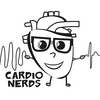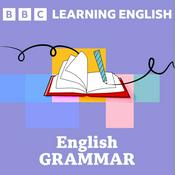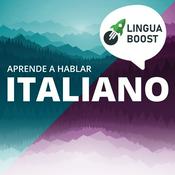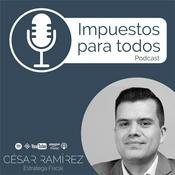440 episodios

439. Atrial Fibrillation: Anti-Arrhythmic Drugs in the Management of Atrial Arrhythmias with Dr. Andrew Epstein
25/12/2025 | 47 min
CardioNerds (Dr. Colin Blumenthal, Dr. Kelly Arps, and Dr. Natalie Marrero) discuss anti-arrhythmic drugs in the management of atrial fibrillation and atrial flutter with electrophysiologist Dr. Andrew Epstein. We discuss two major classes of anti-arrhythmic drugs, class IC and class III, as well as digoxin. Dr. Epstein explains their mechanisms of action, indications and specific patient populations in which they would be particularly helpful, efficacy, adverse side effects, contraindications, and key drug-drug interactions. We also elaborate on defining clinical trials and their clinical implications. Given the large burden of atrial fibrillation and atrial flutter in our patient population and the high prevalence of anti-arrhythmic drug use, this episode is sure to be applicable to many practicing physicians and trainees. Audio editing by CardioNerds academy intern, Grace Qiu. Enjoy this Circulation 2022 Paths to Discovery article to learn about the CardioNerds story, mission, and values. CardioNerds Atrial Fibrillation PageCardioNerds Episode PageCardioNerds AcademyCardionerds Healy Honor Roll CardioNerds Journal ClubSubscribe to The Heartbeat Newsletter!Check out CardioNerds SWAG!Become a CardioNerds Patron! Pearls Anti-arrhythmic drugs should not be thought of as an alternative to ablation but, instead, should be considered an adjunct to catheter ablation. Class IC anti-arrhythmic drugs, flecainide and propafenone, are highly efficacious for acute cardioversion and a great option for patients with infrequent episodes of AF who do not have a history of ischemic heart disease. Class III anti-arrhythmic drugs like ibutilide, sotalol, and dofetilide, are highly effective for acute conversion; however, they require hospitalization for close monitoring during initiation and dose titration given the risk of prolonged QT. Amiodarone should not be used as a first line agent given its toxicities, prolonged half-life, large volume of distribution, and drug-drug interactions. Dr. Epstein notes that, “All drugs are poisons with a few beneficial side effects,” when highlighting the many adverse side effects of anti-arrhythmic drugs, particularly amiodarone, and the importance of balancing their benefit in rhythm control with their side effect profile. Notes Notes: Notes drafted by Dr. Natalie Marrero. What are the Class IC anti-arrhythmic drugs and what indications exist for their use? Class IC anti-arrhythmic drugs are anti-arrhythmic drugs that work by blocking sodium channels and, thereby, prolonging depolarizing. Class IC anti-arrhythmic drugs include flecainide and propafenone. Class IC anti-arrhythmic drugs are good agents to use in patients that have infrequent episodes of AF and do not want daily dosing as these agents can be used by patients when they feel palpitations and desire acute conversion back to sinus rhythm (“pill in the pocket” approach). What are the adverse consequences and/or contraindications to using a class IC agent? Class IC anti-arrhythmic agents are contraindicated in patients with a history of ischemic heart disease based on increased mortality associated with their use in these patients in the CAST trial. Given the results of the CAST trial, providers should screen annually for ischemia via a functional stress test in patients on these drugs at risk for coronary disease. These drugs can increase 1:1 conduction of atrial flutter and, therefore, require concomitant use of a beta blocker. These agents are generally well-tolerated without any organ toxicities; however, they can precipitate heart failure in patients with cardiomyopathies, cause sinus node depression, and unmask genetic arrythmias such as a Brugada pattern. What are the class III agents and what are indications for their use? Class III agents are drugs that block the potassium channel, prolonging the QT, and include Ibutilide, Sotalol, and Dofetilide. Class III agents can be considered in patients with or without a history of ischemic heart disease that desire effective acute chemical cardioversion and are willing to go to the hospital for close monitoring during dose initiation and titration. Other specific circumstances in which one can use these agents, specifically Ibutilide, are in patients with recurrent atrial fibrillation and Wolf Parkinson White (due to slowed conduction via the accessory pathway). What are the adverse consequences and/or contraindications to using a class III agent? Ibutilide, Sotalol, and Dofetilide prolong the QT and increase the risk of torsade de pointes, which is why they require ECG monitoring in-patient during drug initiation and dose titration. These agents are generally well-tolerated. Sotalol should be avoided or used cautiously in patients with left ventricular dysfunction, while dofetilide can be used and has dose-response beneficial effects in patients with left ventricular dysfunction. Both sotalol and dofetilide are renally cleared with specific creatinine clearance cutoffs (CrCl < 20 for dofetilide and CrCl <40 for sotalol) and their dose should be adjusted based on the patient’s creatinine clearance (not eGFR). What is the mechanism of action and indications for using amiodarone? Amiodarone is a class III anti-arrhythmic agent, so it blocks the potassium channel prolonging the QT. Amiodarone is a “dirty drug” as it also has Class I (sodium channel blockade), Class II (antisympathetic action), and Class IV (calcium channel blockade) actions. Amiodarone should be used as a second line agent. Amiodarone can be considered in young, stable outpatients who are already in sinus rhythm especially greater than 60 beats per minute for outpatient loading. What are the drawbacks of amiodarone? Amiodarone, given its large volume of distribution and need to reach ~10 g for efficacy in conversion, takes a longer time to load and, therefore, a longer time to cardiovert. Amiodarone is associated with multiple organ toxicities including pulmonary fibrosis, thyroid toxicity (both hypothyroidism and hyperthyroidism), peripheral neuropathy, sinus bradycardia, QT prolongation, corneal deposits, retinitis and vision loss. Given the organ toxicities, patients on amiodarone should have their LFTs and TSH, a chest X-ray, and electrocardiogram checked at least every 6 months. Amiodarone sensitizes patients to warfarin and increases digoxin levels, so if patients are on amiodarone with warfarin or digoxin, lower levels of warfarin or digoxin should be used. What is dronedarone? How does it differ from amiodarone? Dronedarone is a class III antiarrhythmic, which means it works by blocking the potassium channel and prolonging the QT. Dronedarone differs from amiodarone in that it lacks iodine moiety and, therefore, does not have the associated thyroid toxicities. It also has a shorter half-life and smaller volume of distribution. What are the contraindications to using dronedarone? In the PALACE trial, dronedarone was associated with increased mortality in patients with heart failure, so it should be avoided in patients with clinical heart failure within the last six months. What is the mechanism of action and indication for using digoxin? Digoxin has several mechanisms of action including increasing vagal tone, inhibiting the sodium potassium ATPase, and acting as a positive inotrope. Digoxin is indicated as a second line drug when better rate control is needed. Digoxin improves rate control by increasing vagal tone and so may have an impact on resting rates. However, exertional rates may remain unctonrolled since these are mediated by sympathetic tone. Digoxin is a good option in patients that are not particularly active given that it decreases ventricular rate at rest, but not with exercise. Digoxin may be particularly beneficial in patients with heart failure given its positive ionotropic effects. What are the adverse side effects of digoxin and special monitoring required for patients on digoxin? Typically, digoxin levels are monitored, however they are usually not helpful as the levels are often drawn randomly. To be informative, the levels need to be a trough levels drawn right before the drug is given. The literature contains conflicting results on the mortality associated with digoxin levels. In general, the consensus in the field is that lower levels are better. Digoxin is renally cleared, so levels should be closely monitored in patients with renal failure. References 1. Mar PL, Horbal P, Chung MK, et al. Drug interactions affecting antiarrhythmic drug use. Circulation: Arrhythmia and Electrophysiology. 2022;15(5):e007955. https://doi.org/10.1161/CIRCEP.121.007955. doi: 10.1161/CIRCEP.121.007955. 2. Gianfranchi L, Luzi M, Solano A, et al. Outpatient treatment of recent-onset atrial fibrillation with the “pill-in-the-pocket” approach. N Engl J Med. 2004;351(23):2384–2391. https://doi.org/10.1056/NEJMoa041233. doi: 10.1056/NEJMoa041233. 3. Barker AH, Echt DS, Arensberg D, et al. Mortality and morbidity in patients receiving encainide, flecainide, or placebo. N Engl J Med. 1991;324(12):781–788. https://doi.org/10.1056/NEJM199103213241201. doi: 10.1056/NEJM199103213241201. 4. Markman Timothy M., Jarrah Andrew A., Ye T, et al. Safety of pill-in-the-pocket class 1C antiarrhythmic drugs for atrial fibrillation. JACC: Clinical Electrophysiology. 2022;8(12):1515–1520. https://doi.org/10.1016/j.jacep.2022.07.010. doi: 10.1016/j.jacep.2022.07.010. 5. Joglar JA, Chung MK, Armbruster AL, et al. 2023 ACC/AHA/ACCP/HRS guideline for the diagnosis and management of atrial fibrillation: A report of the american college of cardiology/american heart association joint committee on clinical practice guidelines. Circulation. 2024;149(1):e1–e156. https://doi.org/10.1161/CIR.0000000000001193. doi: 10.1161/CIR.0000000000001193. 6. Ferrari F, Santander IRMF, Stein R. Digoxin in Atrial Fibrillation: An Old Topic Revisited. Curr Cardiol Rev. 2020;16(2):141-146. doi:10.2174/1573403X15666190618110941 7. Van Gelder I,C., Rienstra M, Bunting KV, et al. 2024 ESC guidelines for the management of atrial fibrillation developed in collaboration with the european association for cardio-thoracic surgery (EACTS): Developed by the task force for the management of atrial fibrillation of the european society of cardiology (ESC), with the special contribution of the european heart rhythm association (EHRA) of the ESC. endorsed by the european stroke organisation (ESO). Eur Heart J. 2024;45(36):3314–3414. https://doi.org/10.1093/eurheartj/ehae176. doi: 10.1093/eurheartj/ehae176. 8. Copaescu AM, Vogrin S, James F, et al. Efficacy of a Clinical Decision Rule to Enable Direct Oral Challenge in Patients With Low-Risk Penicillin Allergy: The PALACE Randomized Clinical Trial. JAMA Intern Med. 2023;183(9):944-952. doi:10.1001/jamainternmed.2023.2986 9. Kirchhof P, Camm AJ, Goette A, et al. Early Rhythm-Control Therapy in Patients with Atrial Fibrillation. N Engl J Med. 2020;383(14):1305-1316. doi:10.1056/NEJMoa2019422 10. Anderson JL, Platia EV, Hallstrom A, et al. Interaction of baseline characteristics with the hazard of encainide, flecainide, and moricizine therapy in patients with myocardial infarction. A possible explanation for increased mortality in the Cardiac Arrhythmia Suppression Trial (CAST). Circulation. 1994;90(6):2843-2852. doi:10.1161/01.cir.90.6.2843 11.Akiyama T, Pawitan Y, Greenberg H, Kuo C, Reynolds-Haertle R, The CI. Increased risk of death and cardiac arrest from encainide and flecainide in patients after non-Q-wave acute myocardial infarction in the cardiac arrhythmia suppression trial. Am J Cardiol. 1991;68(17):1551–1555. https://doi.org/10.1016/0002-9149(91)90308-8. doi: 10.1016/0002-9149(91)90308-8. 12. Parkash R, Wells GA, Rouleau J, et al. Randomized Ablation-Based Rhythm-Control Versus Rate-Control Trial in Patients With Heart Failure and Atrial Fibrillation: Results from the RAFT-AF trial. Circulation. 2022;145(23):1693-1704. doi:10.1161/CIRCULATIONAHA.121.057095

438. Heart Failure: Perioperative Heart Transplant Management with Dr. Dave Kaczorowski and Dr. Jason Katz
16/12/2025 | 33 min
In this episode, the CardioNerds (Dr. Natalie Tapaskar, Dr. Jenna Skowronski, and Dr. Shazli Khan) discuss the process of heart transplantation from the initial donor selection to the time a patient is discharged with Dr. Dave Kaczorowski and Dr. Jason Katz. We dissect a case where we understand criteria for donor selection, the differences between DBD and DCD organ donors, the choice of vasoactive agents in the post-operative period, complications such as cardiac tamponade, and the choice of immunosuppression in the immediate post-operative period. Most importantly, we highlight the importance of multi-disciplinary teams in the care of transplant patients. Audio editing for this episode was performed by CardioNerds Intern, Dr. Julia Marques Fernandes. Enjoy this Circulation 2022 Paths to Discovery article to learn about the CardioNerds story, mission, and values. CardioNerds Heart Success Series PageCardioNerds Episode PageCardioNerds AcademyCardionerds Healy Honor Roll CardioNerds Journal ClubSubscribe to The Heartbeat Newsletter!Check out CardioNerds SWAG!Become a CardioNerds Patron! Pearls When thinking about donor selection, you need to consider how much physiologic stress your recipient can tolerate, and this may guide your selection of “higher risk” or “lower risk” donors. The use of DCD donors has increased the potential donor pool and shortened waitlist times with very similar perioperative outcomes to DBD transplantation. Post-operative critical care management rests on a fundamental principle to apply as much inotropic/vasoactive therapy as needed to achieve some reasonable physiologic hemostasis, and then getting “the heck out of the way!” There are no standard regimens as practices vary across centers, but rest on providing adequate RV support, maintaining AV synchrony, and early resuscitation. The RV is fickle and doesn’t take a joke too well. RV dysfunction post-transplant is important to watch for, and it can be transient or require aggressive support. Don’t miss assessing for cardiac tamponade which can require surgical evacuation- “where there’s space, that space can be filled with fluid.” Induction immunosuppression post-transplant varies across centers, but some considerations for use may include (1) high sensitization of the patient, (2) high risk immunologic donor-recipient matching, and (3) recipient renal dysfunction to provide a calcineurin inhibitor (CNI) sparing regimen long term. Management of heart transplant patients is a multi-disciplinary effort that requires coordination amongst heart failure/transplant cardiologists, cardiac surgeons, anesthesiologists, pathology/immunologists and a slew of ancillary services. Without a dynamic and collaborative team, successful cardiac transplantation could not be possible. Notes Notes: Notes drafted by Dr. Natalie Tapaskar What are the basic components of donor heart selection? In practicality, it can be a very inexact science, but we use some basic selection criteria such as: (1) size matching (2) ischemic time (3) donor graft function (4) immunologic compatibility (5) age of the potential donor and recipient (6) severity of illness of the recipient (7) regional variation in donor availability When thinking about accepting older donors (>50 years old), we ideally would screen for donor coronary disease and try to keep ischemic times as short as possible. We may accept an older donor for a recipient who is highly sensitized, which leaves a smaller potential donor pool. There is no clear consensus on size matching, but the predicted heart mass is most used. We are generally more comfortable oversizing than under-sizing donor hearts. Serial echocardiography is important in potential donors as initially reduced ejection fractions can improve on repeat testing, and these organs should not be disregarded automatically. For recipients who are more surgically complex, (i.e. multiple prior sternotomies or complex anatomy), it’s probably preferable to avoid older donors with some graft dysfunction and favor donors with shorter ischemic times. What is the difference between DBD and DCD? DBD is donation after brain death- these donors meet criteria for brain death. Uniform Determination of Death Act 1980: the death of an individual is The irreversible cessation of circulatory and respiratory functions or The irreversible cessation of all functions of the entire brain, including those of the brain stem DCD is donation after circulatory death- donation of the heart after confirming that circulatory function has irreversibly ceased. Only donors in category 3 of the Maastricht Classification of DCD donors are considered for DCD donations: anticipated circulatory arrest (planned withdrawal of life-support treatment). DCD hearts can be procured via direct procurement or normothermic regional perfusion (NRP). The basic difference is the way the hearts are assessed, either on an external circuit or in the donor body. For the most complex recipient, DCD may not be utilized at some centers due to concern for higher rates of delayed graft function, but this is center specific and data is still evolving. What are some features surgeons consider when procuring the donor heart? Visual assessment of the donor heart is key in DBD or NRP cases. LV function may be hard to assess, but visually the RV can be inspected. Palpation of the coronary arteries is important to assess any calcifications or abnormalities. Ventricular arrhythmias at the time of procurement may be concerning. Key considerations in the procurement process: (1) Ensuring the heart remains decompressed at all times and doesn’t become distended (2) adequate cardioplegia delivery (3) aorta is cross-clamped properly all the way across the vessel (4) avoiding injury to adjacent structures during procurement What hemodynamic parameters should we monitor and what vasoactive agents are used peri-heart transplant? There is no consensus regarding vasoactive agent use post-transplant and practice varies across institutions. Some commonly seen regimens may include: (1) AAI pacing around 110 bpm to support RV function and preserve AV synchrony (2) inotropic agents such as epinephrine and dobutamine to support RV function (3) pulmonary vasodilators such as inhaled nitric oxide to optimize RV afterload Early post-transplant patients tend to have low cardiac filling pressures and require preload monitoring and resuscitation initially. Slow weaning of inotropes as the patient shows signs of stable graft function and hemodynamics. RV dysfunction may manifest as elevated central venous pressure with low cardiac index or hypotension with reducing urine output. Optimize inotropic support, volume status, metabolic status (acidosis and hypoxia), afterload (pulmonary hypertension), and assess for cardiac tamponade. Tamponade requires urgent take-back to the operating room to evacuate material. Refractory RV failure requires mechanical circulatory support, with early consideration of VA-ECMO. Isolated RV MCS may be used in the right clinical context. Why do pericardial effusions/cardiac tamponade happen after transplant? They are not uncommon after transplant and can be due to: Inherent size differences between the donor and recipient (i.e. if the donor heart is much smaller than the recipient’s original heart) Bleeding from suture lines and anastomoses, pacing wires, and cannulation sites Depending on the hemodynamic stability of the patient and the location of the effusion, these effusions may require urgent return to the OR for drainage/clot evacuation via reopening the sternotomy, mini thoracotomy, and possible pericardial windows. What are the basics of immunosuppression post-transplant? Induction immunosuppression is variably used and is center-specific. Considerations for using induction therapy may include: (1) high sensitization of the patient (2) younger patients or multiparous women with theoretically more robust immune systems (3) crossing of recipient antibodies with donor antigens (3) renal function to provide a CNI sparing regimen long term Some considerations for avoiding induction may include: (1) older age of the recipient (2) underlying comorbid conditions such as infections or frailty of the recipient What are expected activity restrictions post-transplant? Sternal precautions are important to maintain sternal wire integrity. Generally avoiding lifting >10 pounds in the first 4-12 weeks, no driving usually in the first 4 weeks, monitoring for signs and symptoms of wound infections, and optimizing nutrition and physical activity. Cardiac rehabilitation is incredibly important as soon as feasible. References Kharawala A , Nagraj S , Seo J , et al. Donation after circulatory death heart transplant: current state and future directions. Circ: Heart Failure. 2024;17(7). doi: 10.1161/circheartfailure.124.011678 Copeland H, Knezevic I, Baran DA, et al. Donor heart selection: Evidence-based guidelines for providers. The Journal of Heart and Lung Transplantation. 2023;42(1):7-29. doi:10.1016/j.healun.2022.08.030 Moayedifar R, Shudo Y, Kawabori M, et al. Recipient Outcomes With Extended Criteria Donors Using Advanced Heart Preservation: An Analysis of the GUARDIAN-Heart Registry. J Heart Lung Transplant. 2024;43(4):673-680. doi:10.1016/j.healun.2023.12.013 Kharawala A, Nagraj S, Seo J, et al. Donation After Circulatory Death Heart Transplant: Current State and Future Directions. Circ Heart Fail. 2024;17(7):e011678. doi:10.1161/CIRCHEARTFAILURE.124.011678 Copeland H, Hayanga JWA, Neyrinck A, et al. Donor heart and lung procurement: A consensus statement. J Heart Lung Transplant. 2020;39(6):501-517. doi:10.1016/j.healun.2020.03.020 Velleca A, Shullo MA, Dhital K, et al. The International Society for Heart and Lung Transplantation (ISHLT) guidelines for the care of heart transplant recipients. J Heart Lung Transplant. 2023;42(5):e1-e141. doi:10.1016/j.healun.2022.10.015 Sicim H, Tam WSV, Tang PC. Primary graft dysfunction in heart transplantation: the challenge to survival. J Cardiothorac Surg. 2024;19(1):313. doi:10.1186/s13019-024-02816-6

437. Atrial Fibrillation: The Diagnosis and Management of Atrial Flutter with Dr. Joshua Cooper
05/12/2025 | 30 min
In this episode, the CardioNerds (Dr. Naima Maqsood, Dr. Akiva Rosenzveig, and Dr. Colin Blumenthal) are joined by renowned educator in electrophysiology, Dr. Joshua Cooper, to discuss everything atrial flutter; from anatomy and pathophysiology to diagnosis and management. Dr. Cooper’s expert teaching comes through as Dr. Cooper vividly describes atrial anatomy to provide the foundational understanding to be able to understand why management of atrial flutter is unique from atrial fibrillation despite their every intertwined relationship. A foundational episode for learners to understand atrial flutter as well as numerous concepts in electrophysiology. Audio editing for this episode was performed by CardioNerds intern Dr. Bhavya Shah. Enjoy this Circulation 2022 Paths to Discovery article to learn about the CardioNerds story, mission, and values. CardioNerds Atrial Fibrillation PageCardioNerds Episode PageCardioNerds AcademyCardionerds Healy Honor Roll CardioNerds Journal ClubSubscribe to The Heartbeat Newsletter!Check out CardioNerds SWAG!Become a CardioNerds Patron! Pearls “The biggest mistake is failure to diagnose”. Atrial flutter, especially with 2:1 conduction, is commonly missed in both inpatient and outpatient settings so look carefully at that 12-lead EKG so you can mitigate the stroke and tachycardia induced cardiomyopathy risk Decremental conduction of the AV node makes it more challenging to rate control atrial flutter than atrial fibrillation Catheter Ablation is the first line treatment for atrial flutter and is highly successful, but cardioversion can be utilized as well prior to pursuing ablation in some cases. Class I AADs like propafenone and flecainide may stability the atrial flutter circuit by slowing conduction and thus may worsen the arrhythmia. Therefore, the preferred anti-arrhythmic medication in atrial flutter are class III agents. Atrial flutter can be triggered by firing from the left side of the heart, so in patients with both atrial fibrillation and flutter, ablating atrial fibrillation makes atrial flutter less likely to recur. BONUS PEARL: Dr. Cooper’s youtube video on atrial flutter is a MUST SEE! Notes Notes: Notes drafted by Dr. Akiva Rosenzveig What are the distinguishing features of atrial fibrillation and flutter? Atrial flutter is an organized rhythm characterized by a wavefront that continuously travels around the same circuit leading to reproducible P-waves on surface EKG as well as a very mathematical and predictable relationship between atrial and ventricular activity Atrial fibrillation is an ever changing, chaotic rhythm that consists of small local circuits that interplay off each other. Consequently, no two beats are the same and the relationship between the atrial activity and ventricular activity is unpredictable leading to an irregularly irregular rhythm What are common atrial flutter circuits? Cavo-tricuspid isthmus (CTI)-dependent atrial flutter is the most common type of flutter. It is characterized by a circuit that circumnavigates the tricuspid valve. Typical atrial flutter is characterized by the circuit running in a counterclockwise pattern up the septum, from medial to lateral across the right atrial roof, down the lateral wall, and back towards the septum across the floor of the right atrium between the IVC and the inferior margin of the tricuspid valve i.e. the cavo-tricuspid isthmus. Surface EKG will show a gradual downslope in leads II, III, and AvF and a rapid rise at end of each flutter wave. Atypical CTI-dependent flutter follows the same route but in the opposite direction (clockwise). Therefore, we will see positive flutter waves in the inferior leads Mitral annular flutter is more commonly seen in atrial fibrillation patients who’ve been treated with ablation leading to scarring in the left atrium. Roof-dependent flutter is characterized by a circuit that travels around left atrium circumnavigating a lesion (often from prior ablation), traveling through the left atrial roof, down the posterior wall, and around the pulmonary veins Surgical/scar/incisional flutter is seen in people with a history of prior cardiac surgery and have iatrogenic scars in right atrium due to cannulation sites or incisions How does atrial flutter pharmacologic management differ from other atrial arrhythmias? The atrioventricular (AV) node is unique in that the faster it is stimulated, the longer the refractory period and the slower it conducts. This characteristic is called decremental conduction. In atrial fibrillation, the atrial rate is so fast that the AV node becomes overwhelmed and only lets some of those signals through to the ventricles creating an irregular tachycardia but at lower rates. In atrial flutter, the atrial rate is slower, therefore the AV node has more capability to conduct allowing for higher ventricular rates. Therefore, to achieve rate control one will need a higher dose of AV blocking medications. Atrial tachycardia may require even higher doses due to the increased ability of the AV node to conduct, as the atrial rates are slower than in atrial flutter. Sodium channel blockers (Class I) such as flecainide and propafenone slow wavefront propagation, making it easier for the AV node to handle the atrial rates. This will end up leading to increased ventricular rates which can be dangerously fast. That is why AV nodal blockers should be used in conjunction with flecainide and propafenone. What is the role of cardioversion in atrial flutter management? Due to high success rate with atrial flutter ablation, ablation is the first line treatment. However, sometimes cardioversion may be utilized in patients depending on how symptomatic they are and how long it will take to get an ablation. Cardioversion may also be utilized preferentially when the atrial flutter was triggered by infection or cardiac surgery to see if it will come back. If cardioversion is pursued, the patient will need to be anticoagulated due to the stroke risk after the procedure due to post-conversion stunning. How effective is atrial flutter ablation? The landmark Natale et al study in 2000 demonstrated 80% success rate after radiofrequency ablation as compared to 36% in patients on anti-arrhythmic therapy. The LADIP study in 2006 further corroborated these findings. Contemporary data shows above 90% success rate of atrial flutter ablation. In patients who have had both atrial fibrillation and atrial flutter, most electrophysiologists would ablate both. However, in patients with atrial fibrillation, the atrial flutter usually is initiated by trigger spots firing in the left atrium. Once the atrial fibrillation is ablated, the flutter will become less likely. Therefore, there are those who say there’s no need to ablate the flutter circuit as well. Alternatively, if a patient has severe comorbidities and/or is high risk for ablation, one may consider performing the atrial flutter ablation only since atrial flutter is harder to manage medically compared with atrial fibrillation. How do you manage atrial flutter in the acute inpatient setting? In the inpatient setting, electrical cardioversion is often limited by blood pressure and the hypotensive effects of the sedatives required. If one is awake and too hypotensive, chemical cardioversion can be pursued. The most effective anti-arrhythmic for this is ibutilide. Amiodarone is not effective for acute cardioversion. Since ibutilide prolongs refractoriness in atrial and ventricular tissue, there’s a risk of long QT induced torsades de pointes. Pretreating with magneisum reduces the risk to 1-2%. References Jolly WA, Ritchie WT. Auricular flutter and fibrillation. 1911. Ann Noninvasive Electrocardiol. 2003;8(1):92-96. doi:10.1046/j.1542-474x.2003.08114.x McMichael J. History of atrial fibrillation 1628-1819 Harvey – de Senac – Laënnec. Br Heart J. 1982;48(3):193-197. doi:10.1136/hrt.48.3.193 Lee KW, Yang Y, Scheinman MM; University of Califoirnia-San Francisco, San Francisco, CA, USA. Atrial flutter: a review of its history, mechanisms, clinical features, and current therapy. Curr Probl Cardiol. 2005;30(3):121-167. doi:10.1016/j.cpcardiol.200 2023 ACC/AHA/ACCP/HRS Guideline for the Diagnosis and Management of Atrial Fibrillation: A Report of the American College of Cardiology/American Heart Association Joint Committee on Clinical Practice Guidelines. Circulation. 2024;149(1):e167. doi:10.1161/ Cosío F. G. (2017). Atrial Flutter, Typical and Atypical: A Review. Arrhythmia & electrophysiology review, 6(2), 55–62. https://doi.org/10.15420/aer.2017.5.2 https://www.escardio.org/Journals/E-Journal-of-Cardiology-Practice/Volume-11/Atrial-flutter-common-and-main-atypical-forms Natale A, Newby KH, Pisanó E, et al. Prospective randomized comparison of antiarrhythmic therapy versus first-line radiofrequency ablation in patients with atrial flutter. J Am Coll Cardiol. 2000;35(7):1898-1904. doi:10.1016/s0735-1097(00)00635-5 Da Costa A, Thévenin J, Roche F, et al. Results from the Loire-Ardèche-Drôme-Isère-Puy-de-Dôme (LADIP) trial on atrial flutter, a multicentric prospective randomized study comparing amiodarone and radiofrequency ablation after the first episode of symptomatic atrial flutter. Circulation. 2006;114(16):1676-1681. doi:10.1161/CIRCULATIONAHA.106.638395 https://www.acc.org/Membership/Sections-and-Councils/Fellows-in-Training-Section/Section-Updates/2015/12/15/16/58/Atrial-Fibrillation#:~:text=The%20first%20’modern%20day’%20account,in%20open%20chest%20animal%20models.&text=In%201775%2C%20William%20Withering%20first,(purple%20foxglove)%20in%20AFib.

436. Heart Failure: Pre-Heart Transplant Evaluation and Management with Dr. Kelly Schlendorf
24/11/2025 | 32 min
In this episode, the CardioNerds (Dr. Rachel Goodman, Dr. Shazli Khan, and Dr. Jenna Skowronski) discuss a case of AMI-shock with a focus on listing for heart transplant with faculty expert Dr. Kelly Schlendorf. We dive into the world of pre-transplant management, discuss the current allocation system, and additional factors that impact transplant timing, such as sensitization. We conclude by discussing efforts to increase the donor pool. Audio editing for this episode was performed by CardioNerds Intern, Julia Marques Fernandes. Enjoy this Circulation 2022 Paths to Discovery article to learn about the CardioNerds story, mission, and values. CardioNerds Heart Success Series PageCardioNerds Episode PageCardioNerds AcademyCardionerds Healy Honor Roll CardioNerds Journal ClubSubscribe to The Heartbeat Newsletter!Check out CardioNerds SWAG!Become a CardioNerds Patron! Pearls The current iteration of heart allocation listing is based on priority, with status 1 being the highest priority. The are multiple donor and recipient characteristics to consider when listing a patient for heart transplantation and accepting a heart offer. Desensitization is an option for patients who need heart transplantation but are highly sensitized. Protocols vary by center. Acceptance of DCD hearts is one of many efforts to expand the donor pool Notes Notes: Notes drafted by Dr. Rachel Goodman Once a patient is determined to be a candidate for heart transplantation, how is priority determined? The current iteration of heart listing statuses was implemented in 2018. Priority is determined by acuity, with higher statuses indicating higher acuity and given higher priority. Status 1 is the highest priority status, and Status 7 is inactive patients. (1,2) What criteria should be considered in organ selection when listing a patient for heart transplant? Once it is determined that a patient will be listed for heart transplantation, there are certain criteria that should be assessed. These factors may impact pre-transplant care and/or donor matching (3). (1) PVR (2) Height/weight (3) Milage listing criteria (4) Blood typing/cPRA/HLA typing What is desensitization and why would it be considered? Desensitization is an attempt to reduce or remove anti-HLA antibodies in the recipient. It is done to increase the donor pool. In general, desensitization is reserved for patients who are highly sensitized. Desensitization protocols vary by transplant center, and some may opt against it. When considering desensitization, it is important to note two key things: first, there is no promise that it will work, and second desensitization involves the use of immunosuppressive agents, thereby putting patients at increased risk of infection and cytopenia. (4) Can you explain DCD and DBD transplant? DBD: donor that have met the requirements for legal definition of brain death. DCD: donors that have not met the legal definition of brain death but have been determined to have circulatory death. Because the brain death criteria have not been met, organ recovery can only take place once death is confirmed based on cessation of circulatory and respiratory function. Life support is only withdrawn following declaration of circulatory death—once the heart has stopped beating and spontaneous respirations have stopped. (5,6) References 1: Maitra NS, Dugger SJ, Balachandran IC, Civitello AB, Khazanie P, Rogers JG. Impact of the 2018 UNOS Heart Transplant Policy Changes on Patient Outcomes. JACC Heart Fail. 2023;11(5):491-503. doi:10.1016/j.jchf.2023.01.009 2: Shore S, Golbus JR, Aaronson KD, Nallamothu BK. Changes in the United States Adult Heart Allocation Policy: Challenges and Opportunities. Circ Cardiovasc Qual Outcomes. 2020;13(10):e005795. doi:10.1161/CIRCOUTCOMES.119.005795 3: Copeland H, Knezevic I, Baran DA, et al. Donor heart selection: Evidence-based guidelines for providers. J Heart Lung Transplant. 2023;42(1):7-29. doi:10.1016/j.healun.2022.08.030 4: Kittleson MM. Management of the sensitized heart transplant candidate. Curr Opin Organ Transplant. 2023;28(5):362-369. doi:10.1097/MOT.0000000000001096 5: Kharawala A, Nagraj S, Seo J, et al. Donation After Circulatory Death Heart Transplant: Current State and Future Directions. Circ Heart Fail. 2024;17(7):e011678. doi:10.1161/CIRCHEARTFAILURE.124.011678 6: Siddiqi HK, Trahanas J, Xu M, et al. Outcomes of Heart Transplant Donation After Circulatory Death. J Am Coll Cardiol. 2023;82(15):1512-1520. doi:10.1016/j.jacc.2023.08.006

435. Atrial Fibrillation: Chronic Management of Atrial Fibrillation with Dr. Edmond Cronin
20/11/2025 | 47 min
CardioNerds (Dr. Kelly Arps, Dr. Naima Maqsood, and Dr. Elizabeth Davis) discuss chronic AF management with Dr. Edmond Cronin. This episode seeks to explore the chronic management of atrial fibrillation (AF) as described by the 2023 ACC/AHA/ACCP/HRS Guideline for the Diagnosis and Management of Atrial Fibrillation: A Report of the American College of Cardiology/American Heart Association Joint Committee on Clinical Practice Guidelines. The discussion covers the different AF classifications, symptomatology, and management including medications and invasive therapies. Importantly, the episode explores current gaps in knowledge and where there is indecision regarding proper treatment course, as in those with heart failure and AF. Our expert, Dr. Cronin, helps elucidate these gaps and apply guideline knowledge to patient scenarios. Audio editing for this episode was performed by CardioNerds intern Dr. Bhavya Shah. Enjoy this Circulation 2022 Paths to Discovery article to learn about the CardioNerds story, mission, and values. CardioNerds Atrial Fibrillation PageCardioNerds Episode PageCardioNerds AcademyCardionerds Healy Honor Roll CardioNerds Journal ClubSubscribe to The Heartbeat Newsletter!Check out CardioNerds SWAG!Become a CardioNerds Patron! Pearls Review the guidelines- Catheter ablation is a Class I recommendation for select patient groups Appropriately recognize AF stages- preAF conditions, symptomatology, classification system (paroxysmal, persistent, long-standing persistent, permanent) Be familiar with the EAST-AFNET4 trial, as it changed the approach of rate vs rhythm control Understand treatment approaches- lifestyle modifications, management of comorbidities, rate vs rhythm control medications, cardioversion, ablation, pulmonary vein isolation, surgical MAZE Sympathize with patients- understand their treatment goals Notes Notes: Notes drafted by Dr. Davis. What are the stages of atrial fibrillation? The stages of AF were redefined in the 2023 guidelines to better recognize AF as a progressive disease that requires different strategies at the different therapies Stage 1 At Risk for AF: presence of modifiable (obesity, lack of fitness, HTN, sleep apnea, alcohol, diabetes) and nonmodifiable (genetics, male sex, age) risk factors associated with AF Stage 2 Pre-AF: presence of structural (atrial enlargement) or electrical (frequent atrial ectopy, short bursts of atrial tachycardia, atrial flutter) findings further pre-disposing a patient to AF Stage 3 AF: patient may transition between these stages Paroxysmal AF (3A): intermittent and terminates within ≤ 7 days of onset Persistent AF (3B): continuous and sustained for > 7 days and requires intervention Long-standing persistent AF (3C): continuous for > 12 months Successful AF ablation (3D): freedom from AF after percutaneous or surgical intervention Stage 4 Permanent AF: no further attempts at rhythm control after discussion between patient and clinician The term chronic AF is considered obsolete and such terminology should be abandoned What are common symptoms of AF? Symptoms vary with ventricular rate, functional status, duration, and patient perception May present as an embolic complication or heart failure exacerbation Most commonly patients report palpitations, chest pain, dyspnea, fatigue, or lightheadedness. Vague exertional intolerance is common Some patients also have polyuria due to increased production of atrial natriuretic peptide Less commonly can present as tachycardia-associated cardiomyopathy or syncope Cardioversion into sinus rhythm may be diagnostic to help determine if a given set of symptoms are from atrial fibrillation to help guide the expected utility of more aggressive rhythm control strategies. What are the current guidelines regarding rhythm control and available options? COR-LOE 1B: In patients with reduced LV function and persistent (or high burden) AF, a trial of rhythm control should be recommended to evaluate whether AF is contributing to the reduced LV function COR-LOE 2a-B: In patients with reduced LV function and persistent (or high burden) AF, a trial of rhythm control should be recommended to evaluate whether AF is contributing to the reduced LV function. In patients with a recent diagnosis of AF (<1 year), rhythm control can be useful to reduce hospitalizations, stroke, and mortality. In patients with AF and HF, rhythm control can be useful for improving symptoms and improving outcomes, such as mortality and hospitalizations for HF and ischemia. In patients with AF, rhythm-control strategies can be useful to reduce the likelihood of AF progression. COR-LOE 2b-C: In patients with AF where symptoms associated with AF are uncertain, a trial of rhythm control (eg, cardioversion or pharmacological therapy) may be useful to determine what if any symptoms are attributable to AF. COR-LOE 2b-B: In patients with AF, rhythm-control strategies may be useful to reduce the likelihood of development of dementia or worsening cardiac structural abnormalities. While both rate and rhythm control can improve AF symptoms, several studies (such as AF-CHF) show improved quality of life with rhythm control EAST-AFNET 4 was significant in that it showed rhythm control was associated with a 25% reduction in the combined endpoint of mortality rate, stroke, and hospitalizations due to HF or ACS Acute rhythm control can be achieved with electrical or pharmacological cardioversion. Electrical is more effective and faster than pharmacological and is preferred for patients with hemodynamic instability attributable to AF. However, both approaches involved considerations for anticoagulation and thromboembolic risk. Pharmacologic options for cardioversion include ibutilide, amiodarone, flecainide, propafenone, procainamide, dofetilide, and sotalol. COR-LOE 1-A: In patients with symptomatic AF in whom antiarrhythmic drugs have been ineffective, contraindicated, not tolerated or not preferred, and continued rhythm control is desired, catheter ablation is useful to improve symptoms. AF ablation is also a suitable first-line option in some patients with paroxysmal AF to reduce recurrence and burden. Patient selection is important. Younger patients, those with minimal atrial enlargement, less myocardial fibrosis, and less persistent forms are more likely to have successful ablations, meaning less likely to have recurrence of AF after ablation. HFrEF patients derive greater benefit than others from AF ablation in terms of improved functional status, LV function, and cardiovascular outcomes Surgical ablation can be considered in those undergoing cardiac surgery for some other etiology such as valve surgery or CABG and is associated with increased survival, but some risk of pacemaker placement and renal dysfunction How would you monitor for AF recurrence in post-ablation or cardioversion? Is there a role for monitoring in every patient? Cardiac monitoring may be advised to AF patients for various reasons, such as for detecting recurrences, screening, or response to therapy Long-term surveillance to detect recurrent AF can be beneficial and can be accomplished by various modalities, including wearable devices, smart watches, random monitoring (Holter, event, mobile telemetry), and implantable loop recorders. This is especially helpful in those who had AF-induced cardiomyopathy, especially if their LVEF recovered after rate/rhythm control. This is a population in whom recurrence of AF would want to be promptly noted and addressed. Loop recorders can also be helpful in detecting subclinical AF or in patients with stroke or TIA of undetermined cause (COR-LOE 2a-B) What AF burden warrants intervention? It is important to recognize that AF is a chronic condition and tends to recur, so treatment often is focused on reducing risk of recurrence Patient-clinician shared decision making is important when deciding when/how to intervene, as there is no cut-off for “significant” burden (COR-LOE 1-B) What are some options for antiarrhythmic drugs and their characteristics? Antiarrhythmic drugs are reasonable for long-term maintenance of sinus rhythm for patients with AF who are not candidates for, or decline, catheter ablation, or who prefer antiarrhythmic therapy Amiodarone can be used in patients with or without HFrEF, as opposed to many other anti-arrhythmics that are (relatively) contraindicated in HFrEF or should be used with caution in such patients, such as flecainide, propafenone, dronedarone, and sotalol. However, due to its adverse effects and multiple drug interactions, is should be used only in patients in which other antiarrhythmic drugs are contraindications, ineffective, or not preferred. Dofetilide can also be used in patients with HFrEF. In patients on amiodarone, labs should be checked regularly for thyroid, liver and kidney functions. There is also a role for pulmonary function testing and chest x-rays to monitor for pulmonary fibrosis, but frequency is not clearly established. It should be noted that amiodarone-induced lung toxicity occurs between 6 months and 2 years of use. Flecainide is well tolerated, but is contraindicated in patients with significant coronary artery disease and possibly structural heart disease in general. It can also lead to the development of atrial flutter. Dofetilide and sotalol require regular renal function monitoring and QTC monitoring When should AV node ablation (AVNA) be considered? In patients with AF and uncontrolled rapid ventricular response refractory to rate-control medications (who are not candidates for or in whom rhythm control has been unsuccessful), AVNA can be useful to improve symptoms and QOL (COR-LOE 2a-B) AVNA is effective for rate control and does not require continuation of medications; however, patients become dependent on pacing and lifelong pacemaker implantation, and the potential for device complications AVNA does not prevent progression or recurrence of AF The type of device is dependent on patient comorbidities but the advent of conduction system pacing may improve outcomes in these patients compared with RV pacing. What are some recommendations for managing atrial fibrillation in the perioperative period? In patients with AF (excluding those with recent stroke or TIA, or a mechanical valve) and on oral anticoagulation with either warfarin or DOAC who are scheduled to undergo an invasive procedure or surgery, temporary cessation of oral anticoagulation without bridging anticoagulation is recommended (COR-LOE 1-B) In patients with AF on DOAC that has been interrupted for an invasive procedure or surgery, in general, resumption of anticoagulation the day after low bleeding risk surgery and between the evening of the second day and the evening of the third day after high bleeding risk surgery is reasonable, as long as hemostasis has been achieved and further bleeding is not anticipated (COR-LOE 2a-B) Preop prophylaxis to prevent AF after cardiac surgery with either beta blocker or amiodarone shows mixed benefit and carries a 2a-B recommendation; however, beta blocker is a class 1-A recommendation in patients who do develop AF in the postop period It should be noted that patients who develop AF in the setting of an acute illness or surgery are at risk of recurrence References Joglar, J, Chung, M. et al. 2023 ACC/AHA/ACCP/HRS Guideline for the Diagnosis and Management of Atrial Fibrillation: A Report of the American College of Cardiology/American Heart Association Joint Committee on Clinical Practice Guidelines. JACC. 2024 Jan, 83 (1) 109–279. https://doi.org/10.1016/j.jacc.2023.08.017 Fuster F, Rydén L, et al. ACC/AHA/ESC Guidelines for the Management of Patients With Atrial Fibrillation: Executive Summary A Report of the American College of Cardiology/American Heart Association Task Force on Practice Guidelines and the European Society of Cardiology Committee for Practice Guidelines and Policy Conferences (Committee to Develop Guidelines for the Management of Patients With Atrial Fibrillation) Developed in Collaboration With the North American Society of Pacing and Electrophysiology. Circulation. 2001 Oct, 104 (17). https://doi.org/10.1161/circ.104.17.2118 Kirchhof P, Camm A, et al. Early Rhythm-Control Therapy in Patients with Atrial Fibrillation. N Engl J Med. 2020 Aug, 383 (14) 1305-1416. DOI: 10.1056/NEJMoa2019422 Olshansky, B, Rosenfeld, L, Warner, A. et al. The Atrial Fibrillation Follow-up Investigation of Rhythm Management (AFFIRM) study: Approaches to control rate in atrial fibrillation. JACC. 2004 Apr, 43 (7) 1201–1208.https://doi.org/10.1016/j.jacc.2003.11.032 Whitlock R, Belley-Cote E, et al. Left Atrial Appendage Occlusion during Cardiac Surgery to Prevent Stroke. N Engl J Med. 2021 May, 384 (22) 2081-2091. DOI: 10.1056/NEJMoa2101897 Kirchhof P, Toennis T, et al. Anticoagulation with Edoxaban in Patients with Atrial High-Rate Episodes. N Engl J Med. 2023 Aug, 389 (13) 1167-1179. DOI: 10.1056/NEJMoa2303062 Healey J, Lopes R, et al. Apixaban for Stroke Prevention in Subclinical Atrial Fibrillation. N Engl J Med. 2023 Nov, 390 (2) 107-117. DOI: 10.1056/NEJMoa2310234 Roy D, Talajic M, et al. Rhythm Control versus Rate Control for Atrial Fibrillation and Heart Failure. N Engl J Med. 2008 Jun, 358 (25) 2667-2677. DOI: 10.1056/NEJMoa0708789 Gillinov A, Bagiella E, et al. Rate Control versus Rhythm Control for Atrial Fibrillation after Cardiac Surgery. N Engl J Med. 2016 Mar, 374 (20) 1911-1921. DOI: 10.1056/NEJMoa1602002
Más podcasts de Educación
Podcasts a la moda de Educación
Acerca de Cardionerds: A Cardiology Podcast
Escucha Cardionerds: A Cardiology Podcast, El Podcast de Marco Antonio Regil y muchos más podcasts de todo el mundo con la aplicación de radio.net

Descarga la app gratuita: radio.net
- Añadir radios y podcasts a favoritos
- Transmisión por Wi-Fi y Bluetooth
- Carplay & Android Auto compatible
- Muchas otras funciones de la app
Descarga la app gratuita: radio.net
- Añadir radios y podcasts a favoritos
- Transmisión por Wi-Fi y Bluetooth
- Carplay & Android Auto compatible
- Muchas otras funciones de la app


Cardionerds: A Cardiology Podcast
Descarga la app,
Escucha.



































